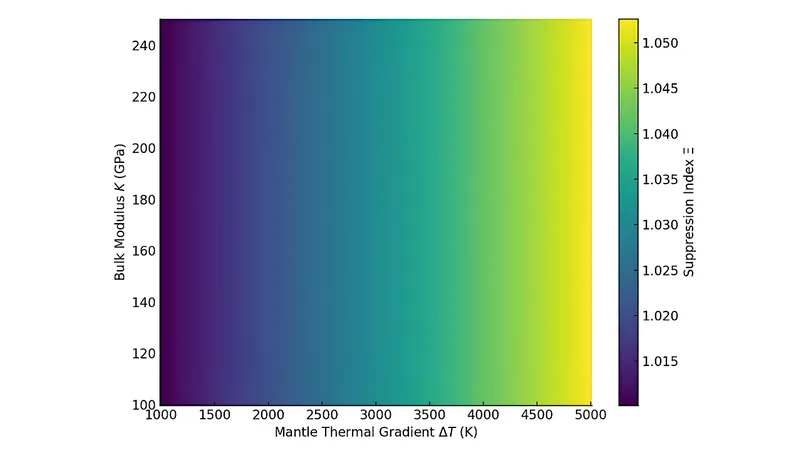
New Insight: How Thermoelastic Contraction Can Save Exoplanet Atmospheres
2025-08-12
Author: Yu
Can Close-In Exoplanets Keep Their Atmospheres?
The challenge of retaining significant atmospheres on close-in exoplanets has puzzled scientists, especially given the rapid mass loss predicted by traditional hydrodynamic escape theories due to fierce stellar radiation. But a groundbreaking new theory might just flip the script!
Introducing Thermoelastic Contraction!
Researchers propose an innovative mechanism known as thermoelastic contraction, which suggests that changes in pressure and temperature within a planet's mantle could play a crucial role in atmospheric retention. This process involves the planet's material experiencing retraction, which can boost the surface escape velocity.
The Science Behind It: Enhanced Escape Velocities
By refining the escape condition through this new perspective, scientists have crafted a dimensionless suppression index—Xi—that measures how effectively a planet’s internal mechanical response can prevent atmospheric loss. Remarkably, their simulations show that even a small volumetric strain (between 0.005 and 0.01) can enhance escape velocities by a striking 10%, slashing energy-limited escape rates by over 50%.
Real-World Applications: Mini-Neptunes Under the Spotlight
This model shines a light on warm mini-Neptunes like GJ 1214b, K2-18b, and TOI-270c, explaining their stable atmospheres without resorting to outlandish stellar conditions or rare chemical scenarios. It provides a more grounded rationale behind their atmospheric persistence.
A Paradigm Shift in Atmospheric Studies
The findings underscore the critical role of planetary elasticity—an often-overlooked aspect in atmospheric escape models. With implications that could reshape our understanding of atmospheric evolution in exoplanets, this theory brings forth testable predictions related to outflow signatures and radius anomalies.
What's Next? Watch for Testing Opportunities!
Excitingly, the predicted phenomena could be observed by advanced telescopes like JWST, ARIEL, and upcoming spectroscopic missions, potentially revolutionizing our grasp of exoplanet atmospheres.





 Brasil (PT)
Brasil (PT)
 Canada (EN)
Canada (EN)
 Chile (ES)
Chile (ES)
 Česko (CS)
Česko (CS)
 대한민국 (KO)
대한민국 (KO)
 España (ES)
España (ES)
 France (FR)
France (FR)
 Hong Kong (EN)
Hong Kong (EN)
 Italia (IT)
Italia (IT)
 日本 (JA)
日本 (JA)
 Magyarország (HU)
Magyarország (HU)
 Norge (NO)
Norge (NO)
 Polska (PL)
Polska (PL)
 Schweiz (DE)
Schweiz (DE)
 Singapore (EN)
Singapore (EN)
 Sverige (SV)
Sverige (SV)
 Suomi (FI)
Suomi (FI)
 Türkiye (TR)
Türkiye (TR)
 الإمارات العربية المتحدة (AR)
الإمارات العربية المتحدة (AR)